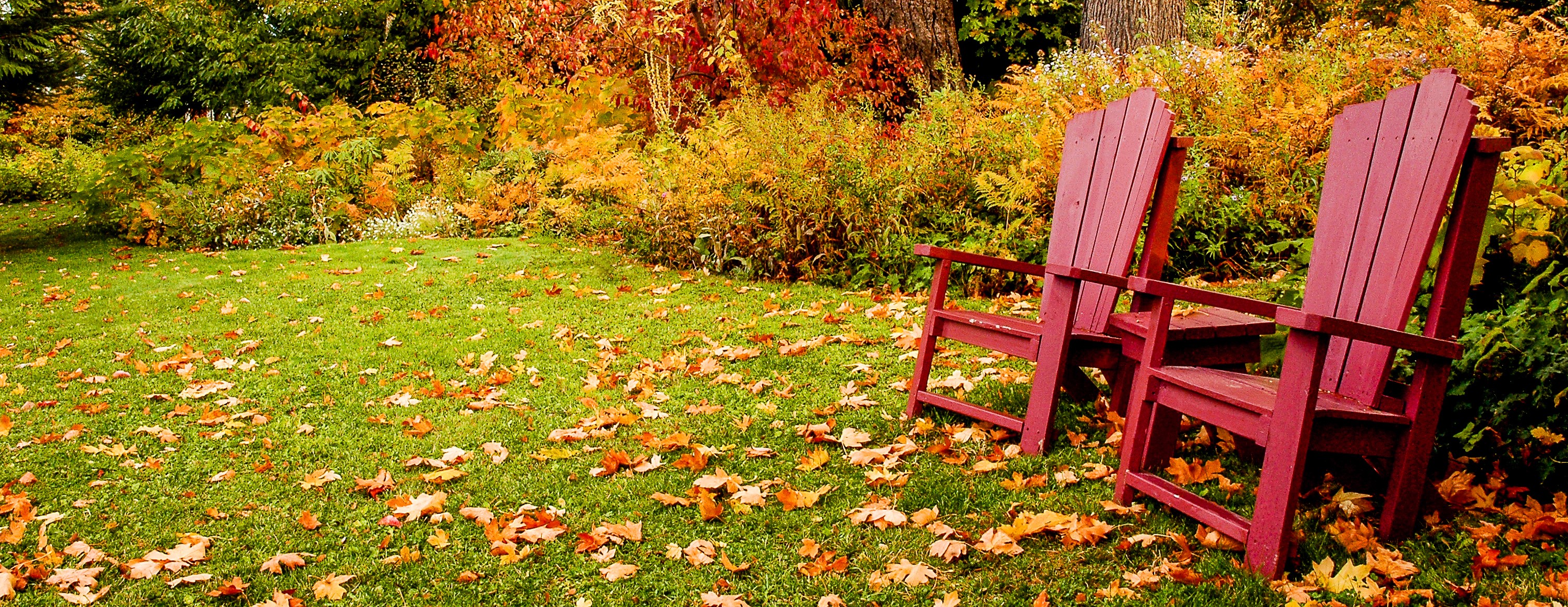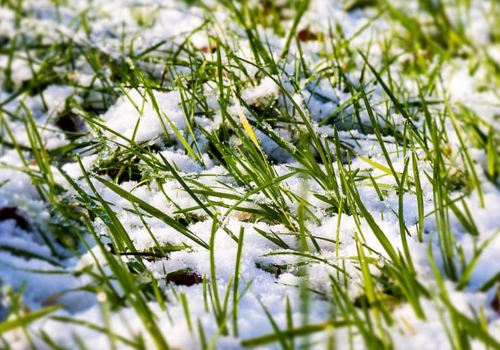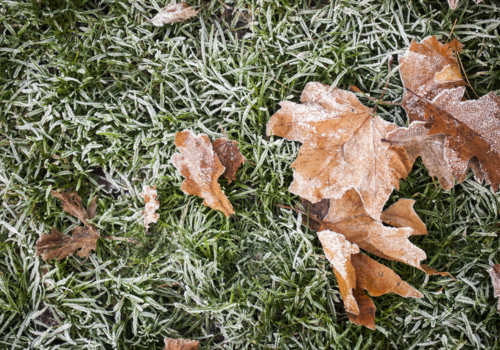
October is a month to pay close attention to in your lawn care calendar. It is the perfect last chance to tackle a few important lawn care tasks if you haven’t already dealt with them before the colder months.
In this blog, we share our lawn care advice for October, to make sure you haven’t missed the opportunity to prepare your lawn for winter.
What should I do to my lawn in October?
Here is your ‘to do’ list:
- Last mowing
- Autumn feed
- Last chance to scarify
- Last chance to overseed
- Aeration
- Moss control
- Collect leaves
Should I mow the lawn in October?
Yes, during October you should still mow the lawn. As the warmth of August and September starts to disappear, grass growth slows at this time of year, so typically it will be your last month of regular mowing.
Expect to adjust the mowing frequency to once a fortnight or less, and keep mower blades high. It’s best to raise your mower blades by one setting at least, and if you have a moss problem, keep grass growth 1-2 cm above the moss.
If you have sown new grass seed, this month offers the last opportunity to mow newly sown areas. If growth is strong it’s best to mow them to tidy them up before the winter. Look for 2-3 inches of growth before mowing newly seeded areas.
Just like in September, you should keep your mower clean by brushing out grass clippings after every use. This will prevent problems caused by the build up of damp grass. Stick to mowing in the afternoon where possible and avoid
mowing after heavy rainfall.
Should I aerate my lawn in October?
If conditions are damp, then you may need to consider lawn aeration.
It’s easier to aerate when the soil is damp, so use a garden fork to reduce compaction. You can also use a hollow tine aerator. This will improve drainage and help with moss problems. Do this before applying a lawn treatment to help prepare the soil.
Autumn Lawn Feed: Is it too late to fertilise my lawn in October?
No, it’s not too late! October is actually a great month to fertilise your lawn. It’s cool and damp, which actually helps the application of lawn fertiliser. It’s also an ideal time to give your grass some nutrients to help it withstand the winter. This is also known as ‘winterizing’.
Apply spring and summer fertiliser while the temperatures remain mild. Switch to an autumn lawn fertiliser towards the end of the month.
Fertilising in October encourages strong root development and will help your grass plants withstand the winter, supporting a healthy lawn all year round.
Can I scarify my lawn in October?
You can scarify your lawn in October but this is your last chance to tackle the task. If you leave it any later in the year, the temperatures will be too low for the grass to recover. In fact, if October is unseasonably cold or if you live in the north of the UK, you might be better off leaving this job until the spring.
As we mentioned in September, it’s best not to undertake this task unless it’s really necessary. If it isn’t essential, scarifying can end up doing more harm than good. Only go about the job if you have over an inch of thatch (dead grass and turf matter) and the weather is fairly mild, but not too dry.
Plan to scarify after a good rainfall. Treat the grass gently as you rake out thatch, debris and moss. Your grass will be exposed after this, so fertilise to help strengthen the roots, topdress and overseed to fill out any bare patches in your lawn.
Overseeding & Laying New Lawns in October
If you have bare patches that need addressing, you can still overseed in October. It’s not too late, but this month is your last chance to reseed your lawn. After this, you’ll need to wait until spring or consider dormant seeding as November and December temperatures are generally too low for growth.
At this time of year, temperatures drop and this has an effect on germination. If the soil temperature is under 9 degrees celsius the grass seed will lay dormant and you won’t see new growth to fill out those patches. That’s why October presents your last opportunity to reseed the lawn and see results. New grass should still grow, and have enough time to get established to survive the winter.
If you need to lay a new lawn, you might be better off considering turf which can be laid at any time of year as long as the ground isn’t frozen.
Watering your lawn in October
This month, regular watering isn’t necessary. Cooler temperatures help the ground hold moisture and rain tends to be plentiful in October. The only times you’ll need to consider watering is if you scarify, sow grass seed or lay new turf.
How to control moss on your lawn in October
Moss growth can begin to overwhelm your grass at this time of year, and the problem can be a tricky one. Raking out the moss when temperatures are so cool can just leave it open to another moss problem.
One solution is to take action in the rest of the garden. Cut back any large plants or trees that are creating shade. This will allow more light to reach the grass, helping it to photosynthesise and avoid being overrun with moss. It will also reduce the shady conditions that help moss to thrive.
Keep the grass growing 1-2 cm above the moss, so don’t mow it too short or too often. Aerate or spike the problem areas with a garden fork to encourage drainage. Moss thrives in damp, shady conditions so reducing these should help improve the problem.
Lawn Care Tips for October
Keep your lawn looking great as the winter approaches with these additional lawn care tips:
- Leaves: it’s really important to regularly collect leaves that fall on to your lawn during the autumn. If left, they can cause moss problems, encourage worms and damage the health of your grass. Clear them weekly if possible. You can add them to your compost heap and allow them to rot for use in the garden next year.
- Weeds: as growth is slowing, you shouldn’t see much of a weed problem at this time of year. Manual removal should suffice if you spot any.
- Pests: worms are a healthy part of your lawns ecosystem but their casts can become a problem at this time of year. Damp soil is difficult to brush away so you will need to tolerate some worm casts. Fallen leaves are an extra food source for earthworms, so removing these will help to reduce excessive casts on the surface.
- Lawn disease: the most common lawn disease at this time of year is fusarium. It thrives in damp weather, and will make your grass look patchy and straw like. If you do see a problem, make sure you aerate these areas to improve drainage. Plan to scarify at the next opportunity (in spring) if you can see a build up of thatch.
Hopefully, you have managed to take care of all those last minute tasks to get your lawn ready for winter. Your lawn care will switch a gear now that you don’t need to be out mowing as often, but it certainly shouldn’t be forgotten. Make sure you keep up with our month by month lawn care calendar for advice on how to care for your lawns all year round.
More Lawn Care Help
For guidance throughout the year, check out our monthly lawn calendar — packed with advice for spring, summer, autumn, and winter care. Looking ahead? Don't miss our upcoming lawn care guides:
How We Can Help!
At Boston Seeds, we take pride in our excellent customer service. If you're growing a lawn from scratch and aren’t sure how much grass seed you need, try our handy Grass Seed Calculator — it’ll do the maths in just a few clicks!
Need seed quickly? We offer Next Day Delivery on hundreds of products.
Ordering regularly or in large quantities? Click here to apply for a trade account - we’ll review your application within one working day. Got any questions? Please get in touch, we’re happy to help!


